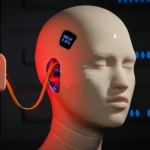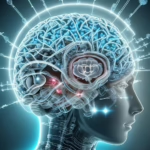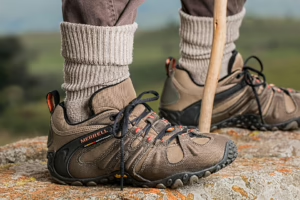Nighttime Muscle Spasms: Causes and Effective Treatments
Muscle spasms at night can be distressing, interrupting sleep and leaving individuals feeling exhausted the next day. Understanding the causes of these involuntary contractions is critical for managing and alleviating discomfort. This article will explore the reasons behind nighttime muscle spasms and discuss effective treatments to help mitigate their occurrence.
Understanding Muscle Spasms
What Are Muscle Spasms?
Muscle spasms are sudden involuntary contractions of one or more muscles. They can occur in any muscle in the body but are most common in the legs, particularly the calves. Spasms can last from a few seconds to several minutes and range in intensity from mild twitches to severe pain.
Types of Muscle Spasms
- Tonic Spasms: These involve a prolonged contraction of the muscle, often leading to stiffness.
- Clonic Spasms: Characterized by rapid and alternating contractions and relaxations of the muscle.
Common Areas Affected
Spasms frequently occur in the lower extremities, especially the calves, hamstrings, and feet. However, they can also affect other areas, such as the back and neck.
Causes of Nighttime Muscle Spasms
Nighttime muscle spasms can result from various factors, including lifestyle choices, medical conditions, and physiological changes. Here are some primary contributors:
1. Dehydration
One of the most common causes of muscle cramps is dehydration. When the body loses too much fluid, it can lead to an imbalance of electrolytes such as sodium, potassium, and magnesium, which are vital for proper muscle function.
2. Electrolyte Imbalance
Electrolytes are essential for muscle contraction and relaxation. A deficiency in key electrolytes can cause muscle cramps. For instance, low potassium can lead to electrolyte imbalances that trigger spasms.
3. Overexertion and Muscle Fatigue
Intensive physical activity can lead to muscle fatigue, which may precipitate cramps during rest. Athletes, in particular, sometimes experience nighttime spasms after rigorous training sessions.
4. Prolonged Sitting or Standing
Sitting or standing in one position for an extended period can overload muscles, making them more susceptible to spasms. This is especially true for individuals who work long hours at desks or on their feet.
5. Medical Conditions
Several underlying medical conditions can contribute to nighttime muscle spasms:
- Peripheral Artery Disease (PAD): A condition that reduces blood flow to the legs can lead to cramping.
- Diabetes: High blood sugar levels can affect nerve function and cause cramps.
- Neurological Disorders: Conditions such as Multiple Sclerosis (MS) or Parkinson’s Disease can lead to muscle spasms.
6. Medications
Certain medications can cause muscle cramps as a side effect. Common culprits include diuretics, statins, and some asthma medications. It is essential to consult a healthcare provider if muscle spasms are suspected to be related to medication use.
7. Pregnancy
Pregnant individuals often experience muscle cramps, particularly in the legs, typically due to increased weight, hormonal changes, and circulation alterations.
8. Age
As individuals age, muscle mass tends to decrease, and muscle function can deteriorate. Older adults are more likely to experience spasms due to these changes.
Effective Treatments for Nighttime Muscle Spasms
Managing nighttime muscle spasms involves a combination of lifestyle changes, home remedies, and medical interventions. Here are some effective treatments:
1. Stretching
Regular stretching of the calf and leg muscles can help prevent spasms. Gentle stretching before bedtime, such as calf stretches and toe flexes, can reduce the likelihood of cramps during the night.
Stretching Techniques:
- Calf Stretch: Stand with one foot in front of the other, bend the front knee while keeping the back leg straight, and press your heel into the floor.
- Toe Flexes: While sitting or lying down, point and flex your toes to keep muscles engaged.
2. Hydration
Staying well-hydrated can prevent dehydration-related cramps. Drink plenty of fluids throughout the day, especially before bedtime, to maintain electrolyte balance.
3. Dietary Changes
Incorporating foods rich in potassium (bananas, oranges), magnesium (nuts, seeds), and calcium (dairy products) can help maintain proper electrolyte levels.
4. Compression Socks
Wearing compression socks can improve blood circulation in the lower limbs, reducing the likelihood of cramps. These are particularly useful for individuals who sit or stand for extended periods.
5. Warm Baths and Heat Therapy
Heat can alleviate muscle tension and reduce the occurrence of spasms. Taking a warm bath before bed or applying heat packs to affected areas can provide relief.
6. Cold Therapy
Conversely, if a muscle spasm occurs, applying a cold compress can help alleviate pain and reduce inflammation.
7. Pain Relief Medications
Over-the-counter medications like ibuprofen or acetaminophen can provide temporary relief from the discomfort associated with muscle spasms. Consulting a healthcare provider for chronic symptoms is essential.
8. Physical Therapy
For persistent spasms, seeking help from a physical therapist can provide personalized exercise regimens tailored to address muscle weaknesses and imbalances.
9. Medication Review
If nighttime muscle spasms are linked to medications, it’s crucial to consult a healthcare provider. They can adjust prescriptions or suggest alternatives.
10. Vitamin Supplements
In some cases, vitamin deficiencies may contribute to muscle spasms. Supplementing with vitamins B, D, and E may help, but it’s essential to discuss this with a healthcare professional.
Conclusion
Nighttime muscle spasms can be uncomfortable and disruptive, impacting sleep quality and overall well-being. Understanding their causes is paramount in effectively addressing and treating these episodes. Incorporating lifestyle changes, utilizing home remedies, and seeking professional advice can significantly aid in reducing the frequency and severity of muscle spasms. Ultimately, with the proper knowledge and strategies in place, individuals can enjoy a more peaceful night’s sleep and a better quality of life.
References
- [1] Kjaer, M., & Overgaard, K. (2019). "Understanding Muscle Fatigue". Sports Science Reviews.
- [2] Sweeney, T. (2020). "Electrolyte Imbalance in Muscles". Clinical Reviews.
- [3] Jones, C. (2021). "Dietary Impact on Muscle Cramps". Nutrition Journal.
- [4] Patel, A. (2022). "Role of Physical Therapy in Muscle Management". Physical Medicine & Rehabilitation.
- [5] Skinner, J. (2023). "Hydration and Performance: A Review". Journal of Sports Nutrition.
This outline provides a comprehensive overview of nighttime muscle spasms, covering causes, effects, and treatments effectively. Please let me know if you need any changes or additional information!


























Add Comment